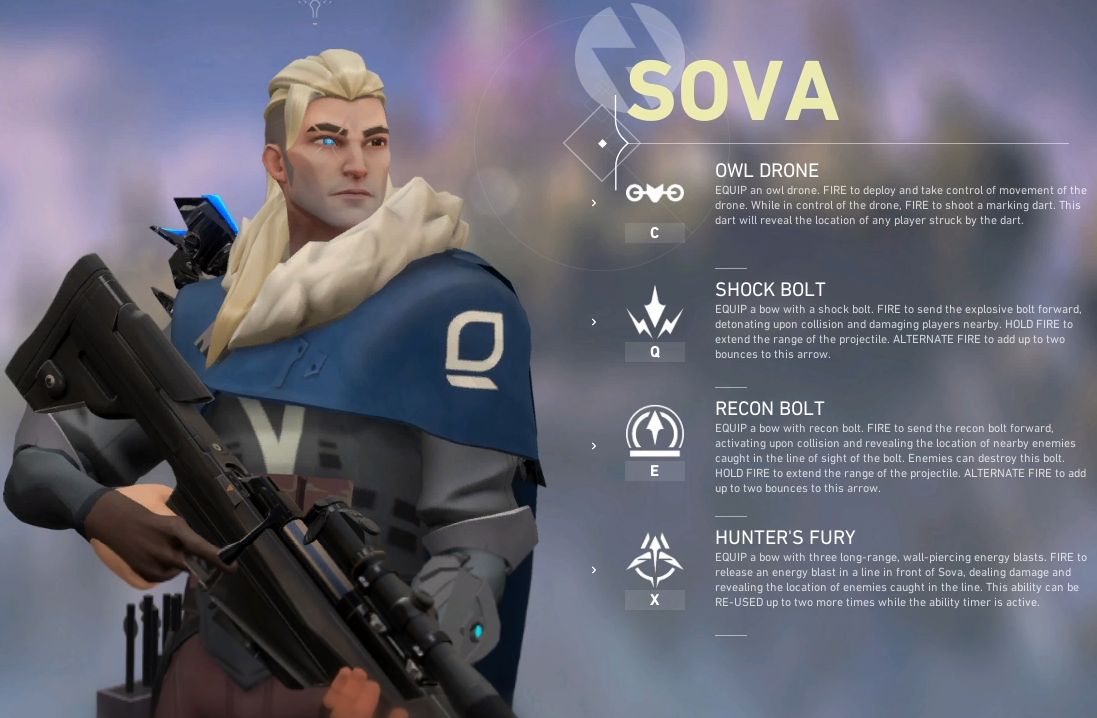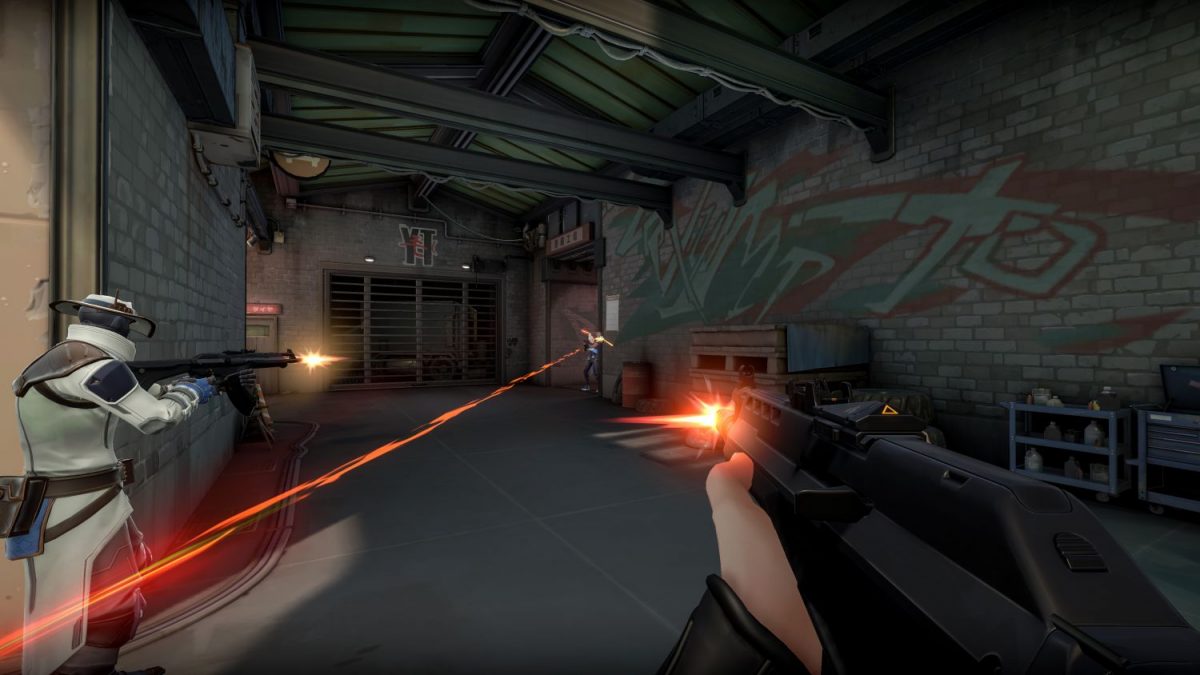With the overwhelming, lasting success of League of Legends, it’s no surprise that Riot Games’ brand-new tactical shooter Valorant caught the attention of the gaming community when news of it first dropped. But what’s even more telling of Riot’s impact is how the game already got a dedicated following before its official launch today (2 June 2020), with FPS fiends heading over to Twitch, and watching hours of gameplay for a shot at a beta key.

The world of esports is not spared from the Valorant fever as well. Apart from early shows of praise and enjoyment from renowned personalities like Shroud and Kephrii, the game has also siphoned pro players from Apex Legends, Overwatch, and CS:GO, as it slowly carves its path to becoming the next big thing.
That’s saying something, considering how the FPS market is already littered with titles, from the big-name classics to smaller cult favourites. The general consensus seems to be that the potential of Valorant is extremely far-reaching, and after a quick three-hour gameplay session at an online Southeast Asia bootcamp hosted by Riot (thanks, guys!), we got an inkling of the charm that has taken many by storm.
Here’s what we think.
The basics: Valorant 101

First, a brief run-down of gameplay. Valorant is categorised under the tactical shooter genre, which puts it in the same field as CS:GO and Ubisoft’s Rainbow Six: Siege. A five-versus-five title, it spans a total of 25 rounds, where the first team to win 13 rounds ends up as the eventual victor. The duration for one round is set at the maximum of 100 seconds, though the game time will vary depending on a few factors (skill difference, team composition, etc). An entire game should thus clock in around 40 minutes or so, but unless both teams are evenly-matched, the average would be 30 minutes; even 20 if the match is one-sided.
Like the former’s signature game mode, Riot’s shooter sees one team planting a bomb, otherwise known as Spike, on a selected site (‘A’, ‘B’, or ‘C’), while the other attempts to stop them from doing so by defusing the device, and/or killing everyone on the opposing side. Players only have one life each per round, and are allowed to purchase weapons and abilities in the Buying Phase, both of which will be carried over to the next round if they survive.

Unlike CS:GO, however, Valorant offers a character roster that runs along the same lines of Rainbow Six: Siege’s Operators. Called Agents, these characters come armed with a unique set of abilities, and are categorised into four types: Controller, who helps to push (or in CS:GO terms, “rush”) the team; Sentinel, whose defence-based abilities reinforce territory and provide flank protection; Initiator, who specialises in gaining information and distracting enemies; and Duelist, who excels best in gunfights.
Practice is key

As an extremely casual player of Rainbow Six: Siege and a more dedicated Overwatch enthusiast with zero CS:GO experience, Valorant is difficult. The mechanics themselves are perfectly fine, and it’s easy enough to pick up the basics, but the game’s oodles of depth makes for a steep learning curve. Guns are highly reliant on movement, resulting in less accurate shooting while on the go. This means you’ll have to stand still to yield the best accuracy, while also placing your shots, and for an individual with strafing encoded in the DNA, making the change takes a conscious effort. Crouch-peeking a la Rainbow Six: Siege is present, although it does feel slower here. Because of how the game is structured, members who get shot will find their movements being slowed down permanently, thus putting them at a disadvantage over their peers.
The weapon-purchasing system at the beginning calls for added strategy as well, especially at the start of a round. You’ll have to choose between buying a better firearm, getting better-padded shields for extra protection, and/or investing in the Agent’s abilities. Once the action kicks off, there’s a lot of factors to take into account: steering clear of sight lines, aiming accurately, managing your own positioning, predicting the enemies’ location and their subsequent course of action, yadda yadda yadda. Everything is likely to turn into a frenzied mess fast, and it takes quite a bit to keep up.

Difficult game is difficult, indeed. Fortunately, all that skyrocketing stress and blood pressure gives way to a great sense of gratification when a round is won, especially if it’s a clutch victory. Valorant’s a simple game, but it’s definitely going to be one hell of a beast to master. The giddy, satisfying rush of a victory more than makes up for the heightened stress and blood pressure levels, however.
80% CS:GO, 10% Rainbow Six: Siege, 5% Overwatch, and 100% reason to remember the name
Valorant is many things. A melting pot of influences from CS:GO, Rainbow: Six Siege, and Overwatch, it boasts several familiar elements from one game to another. For instance, the 30-second wait time before the start of a round is in line with the play style of Rainbow Six: Siege, where team members come together to discuss strategy in voice comms. The concept of a hero roster and different Ultimate abilities lends itself to Overwatch’s mechanics. More than that, though, Riot’s shooter is clearly mostly entrenched in the straight-shooting DNA of CS:GO.

Here, you can’t shoot through walls like in Rainbow Six: Siege, or have a drone as a standard piece of equipment (only Agent Sova has this ability in-game). Ultimate abilities aren’t as game-changing as that in Overwatch, in which pressing a single key can lead to a massive instakill of multiple targets. In place of having Reaper teleport to high ground, then dropping down while holding the Ultimate key, Valorant implements a compromise instead: get more kills, and the ability will get charged faster. Not all of the ultimate abilities are damage-based: Sage, as a healer, is able to revive her teammates, while Phoenix’s ultimate ability grants him temporary immunity for a set duration, and then sends him back to his original position (think Tracer’s Blink). There are black orbs along the way that you may collect to increase the charge, but pretty much everything else is fair game. Well, almost.
See, Overwatch relies a lot on how and when a hero’s Ultimate is used, and how many are in play at any one time. Riot’s shooter, much like Rainbow Six: Siege, programmes abilities to act more like tactical options rather than flashy POTGs, such that your gunplay is what carries you and your team through the rounds. To say that you can win without using any ability is not entirely accurate, but it’s entirely possible to do so, especially for CS:GO veterans. It’s good ol’ no-frills shooting all around, where deft wrist flicks, hip-fire shots, and cool-headedness run the show.
Valorant also doesn’t give characters health or damage boost, so every player starts out with the same base stats. In line with Rainbow Six: Siege, it features area denial elements alongside traditional tactical shooter fare, such as smokescreens and blinding light.

It’s not the abilities or Ultimate aren’t welcome. They can come in handy during critical moments like retreating or providing cover, but it feels as though they are unneeded, and sometimes redundant in the grand scheme of things. There’s also the matter of logic: the idea of having an ultimate is to bring in an ace card, designed to turn the tides of the battle. In Valorant where pure aim reigns, there’s little purpose for an ultimate, and it does feel like it’s just there to introduce a little more (unnecessary) chaos. Rainbow Six: Siege’s model is more sound, we reckon.
Despite the inevitable comparisons, Valorant has done a decent job at combining the various elements, and can be quite the joy to play. It boasts enough charm to stand alone as a solo title, and warrants enough merit as an up-and-coming shooter, barring some flaws.
Getting to the action: Agents, guns, and maps

Valorant’s attempt to encourage different play styles with a character roster is amicable, but it appears to fall a little flat here. Rainbow Six: Siege’s Operators and Overwatch’s heroes are fleshed out well enough, memorable and outstanding in their own right. In contrast, the 10-character (11-character now, with a new Agent announced a few days ago) cast is rather insipid and forgettable – apart from Phoenix, Jett, and Sage, the rest are simply remembered as “the remaining Agents”. The lack of model detail certainly doesn’t help the lack of personality, too. One Agent who is particularly uninspiring is Sova, whose enemy-detecting ability, blue-aura ultimate, and archer-equipped capabilities are heavily reminiscent of Overwatch’s Hanzo.
In Riot’s defence, they did do a better job at characterisation than CS:GO, though that’s one very low bar. Team Fortress II is perhaps the best source of reference, with its similar graphics and hybrid FPS play style.

Game-wise, there are some Agents who stand out more than others, usually because they are slightly more overpowered. Poster character Jett, with her mobility kit, can be annoying to go up against, while Sage, with the ultimate ability to revive a teammate – on top of the normal skill to heal between 30-second cooldowns – simply gives too big an advantage.
Next, guns. The firearms in Valorant have recoil patterns in place, so you’ll probably need a little time to familiarise yourself with it. Understanding the bullet spray and kickback will give you a better grasp of pre-aiming to land all those delicious headshots before being spotted. It’s extremely gleeful to hear the registered ping of a headshot, and shooting, as far as the game goes, is very much a pleasant affair, so kudos to Riot for rolling out smooth, responsive gameplay.
The gun system isn’t without flaws, however. Many of them look alike to one another, and this makes it difficult to differentiate between, say, a semi-auto, and a full-auto, especially for newcomers to the genre. There were times where the Phantom assault rifle was equipped, only for it to spout bullets intermittently, instead of the expected full-auto spread. The nuance will undoubtedly be appreciated by CS:GO veterans, and hopefully the release of new gun skins will make for a better visual connection. Some firearms seem to be unfairly adjusted as well, sporting more or less damage than its price suggests.

Maps, meanwhile, have been tailored to support different team comps. The playthrough session saw the Haven and Bind maps in action, both with their own set of features: the former with a larger defending area and more flank routes, and the latter with a one-way teleporter. In both cases, navigating through the area gave rise to much paranoia, cautious anticipation, and twitch shooting, despite their relatively small sizes. That’s good, because it’ll keep you on your toes at all times, but be careful not to land yourself in a dead end – the routes can be pretty confusing at times. Another issue is that you may get tired of the map real quick (since there are only so many of them), though judging by CS:GO’s popularity, that shouldn’t become a major problem for most.
Blander visuals, better gameplay
Truth to be told, the bland visuals of Valorant were quite an eyesore in the beginning. After the carefully-crafted, vibrantly-detailed maps of Overwatch and Rainbow Six: Siege, Riot’s tactical shooter felt like a downgrade with a lack of deep shadows, and a predominantly beige-grey colour scheme. Subsequently, it got easier to ignore the flat graphics, and when all the focus was channelled into gameplay, the purpose of flat graphics suddenly became evident. The dull contrast allows for clearer reticle, and makes it easier to track bullets; these elements, combined with hit sounds, brings enhanced readability and accessibility to the table: in rolling out blander visuals, the company can tailor the game to run on almost every computer.

Valorant is a lot of things – refreshing, daunting, thrilling, frustrating, enjoyable – but above it all, it’s a game that rewards adaptation and creative outplay. It’s no easy feat by any means, and it’s difficult on the uptake for tactical-shooter beginners, with much to learn, explore, and absorb. A few rounds with pleasant company will certainly make the experience better, though it’s most likely not a game for everyone: despite its blend of borrowed elements, Valorant is still very much a niche title on the market. Thus far, it has given more of a positive impression, successfully piquing the interest of this non-CS:GO player scrub.
Word on the block is that Riot’s shooter will kill the player base of Rainbow Six: Siege, CS:GO, Overwatch, and the like, and chances are it won’t. Sure, players will definitely hop over but there doesn’t seem to be much incentive for players who are already playing these titles to make the swap. If anything, its free, public access is a strong plus point.
Valorant is out now on the Riot Games Store for free.













